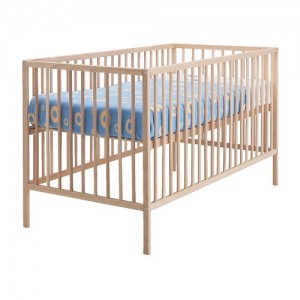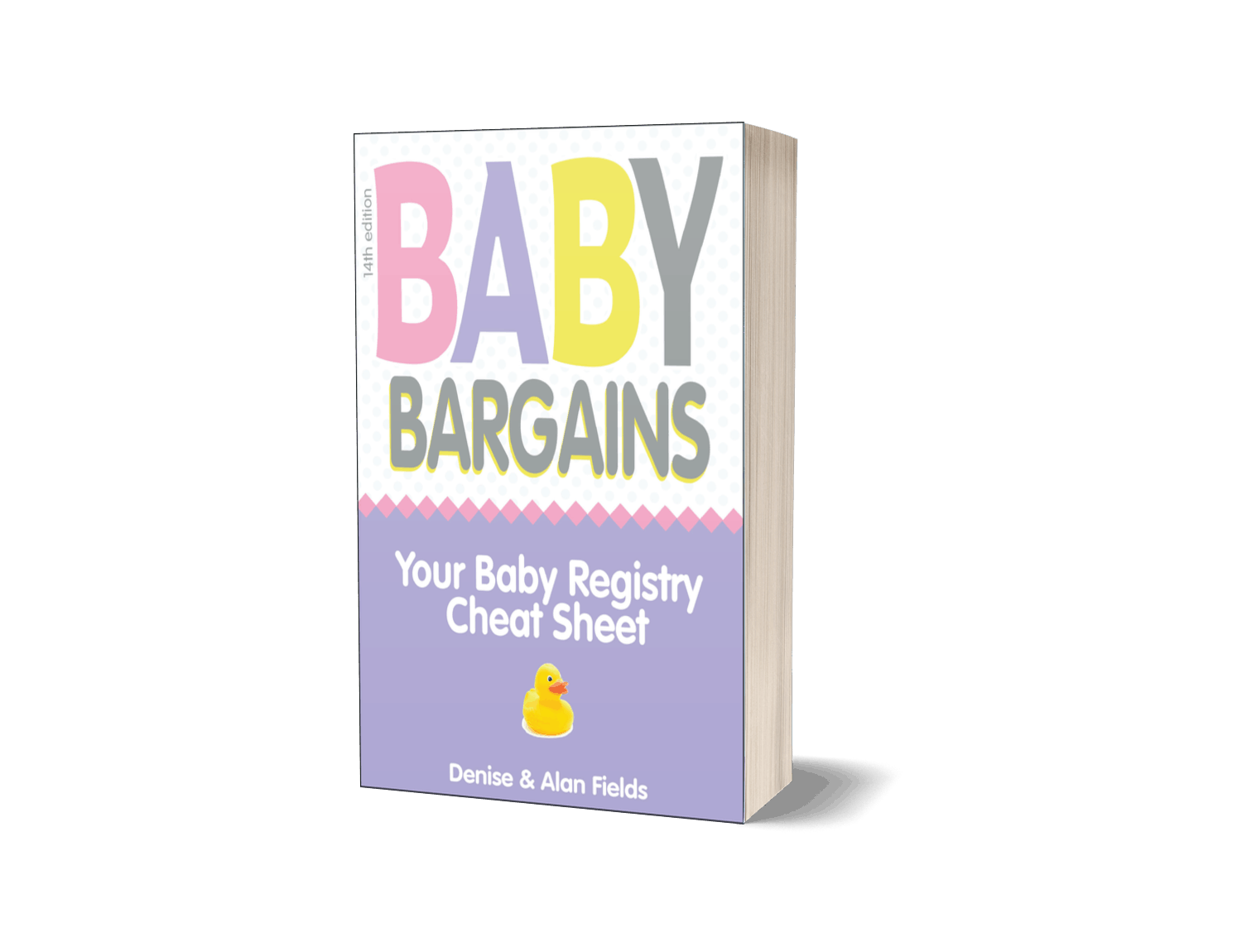IKEA is an incredibly affordable option for cribs and other nursery furniture items. For example, their simple Sniglar (pictured, right) is just $80. IKEA has five other crib options: Gulliver ($100-$120), Hensvik ($100), Stuva ($200) and Sundvik ($120). New in the past year is the Gonatt ($200), with curved solid end panels and an under-crib drawer for $200. Yes, all these cribs meet U.S. safety standards—they are so inexpensive because they are very simply styled.
Of course, IKEA sells more than just cribs: you can buy dressers ($80 to $300), twin beds ($100 to $180), lamps, bedding and more.
So what’s the catch? Well, most items require assembly that can drive just about any sane person off a cliff—although we should point out, that assembling an IKEA crib is just as easy as assembling any brand of crib. The assembly challenge usually comes in with IKEA dressers or other storage units.
The quality of IKEA’s dressers and other furniture items can best be described as no-frills (example: their crib mattress didn’t impress us—too soft, in our opinion). Obviously, IKEA bedroom furniture isn’t intended to be heirloom quality that will last until your kid goes to college. But this is a great stop gap if you need something affordable (even if you plan to replace it down the line).
IKEA suffered a major black eye in 2016 with a recall of 29 million dressers and chests after four children were killed when the dressers tipped over on them. IKEA’s MALM dressers were the problem—even though IKEA included a warning to anchor the dressers to the wall and hardware to do just that (for most of time that the units were for sale), many folks didn’t follow these instructions. All four deaths occurred with dressers that were not anchored. IKEA critics blame the company for poorly designed dressers that were unstable because of their narrow depth.
So that brings us to this important safety message: ALWAYS anchor furniture to the wall. That means more than just dressers—bookcases, armoires, etc. are risks for tip-over accidents. If you rent an apartment, realize that you can still anchor furniture even if that means drilling holes in the walls to anchor the furniture into a stud. It is rather simple to repair these holes.
The take home message: IKEA’s furniture is affordable because it is lighter and often smaller/narrower than other furniture on the market. This appeals to parents who live in urban condos or apartments, as space is usually limited. But these same design elements increases the risk of tip-overs. Bottom line: ALWAYS anchor dressers, chests and bookcases to a wall, whether they are from IKEA or any brand.
Leaving aside the 2016 recall controversy, reader feedback on IKEA nursery furniture has been positive. If you can live with the assembly process (especially for the dressers), then this is a good choice. Rating: A-


 We obsess over gear for families and the home . . . so you don’t have to. Baby Bargains has one mission: help you find the best gear for your family with unbiased reviews by experts with 20 years of experience. At prices that don’t break the bank. When you purchase a product from links on this site, we make a small affiliate commission. Learn more
We obsess over gear for families and the home . . . so you don’t have to. Baby Bargains has one mission: help you find the best gear for your family with unbiased reviews by experts with 20 years of experience. At prices that don’t break the bank. When you purchase a product from links on this site, we make a small affiliate commission. Learn more 

Do you think there is an increased risk in the fact that the consumer assembles the product themself?
No, all cribs must be assembled! There are a few baby stores out there that offer assembly, if you are concerned. But I would guess 95% of all cribs are self-assembled by parents!
Make sure to assemble it in the room you’ll keep it, because it won’t fit through normal door openings and to get it in you must deconstruct and reassemble. Not fun.